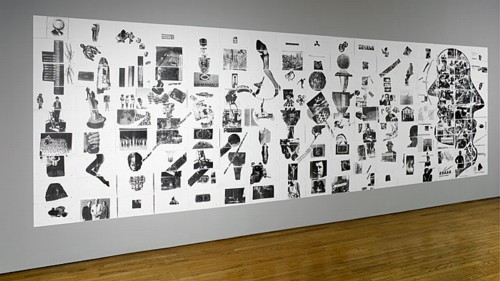
I first encountered filmmaker Stan VanDerBeek's work in Aspen Magazine. His 1964 collaboration with Robert Morris, Site, combined dance/performance, art, and film. Performers create a physical, 3-D approximation of camera wipes and reveals using large black and white panels. Though Morris and VanDerBeek made it years before, it reminds me of early video art work from WGBH that explored the functions and visual properties of the new technology.
Throughout his career, VanDerBeek was an "advocate of the application of a utopian fusion of art and technology." [That's from his E.A.I bio on Ubu, btw.] Which would be interesting enough on its own. But until I get down there to see the actual show, what I find most fascinating about Guild & Greyshkul's current survey of VanDerBeek's varied output is the intricacies of how his family began dealing with it after he passed away.
Two of G&G's artist-owners are VanDerBeek's children, and the process they went through--part biographical, part familial, part art historical, part archive/conservational--is just awesome. Sara VanDerBeek's discussion with Brian Sholis is at Artforum.com.
The image above is Panels for the Walls of the World, a 153-panel "fax mural" which VanDerBeek sent from MIT to various places around the country in 1970. Phase I, above, was transmitted to the Walker Art Center. There were four "phases" of Panels, and it's possible that a significant percentage of all the fax toner in the country in 1970 was exhausted printing out VanDerBeek's murals.
Stan VanDerBeek runs through Oct. 18 at Guild & Greyshkul; Navigate from this crazy page, too [guildgreyshkul]
500 Words | Stan VanDerBeek by Sara VanDerBeek [artforum]
Films of Stan VanDerBeek [ubu]












